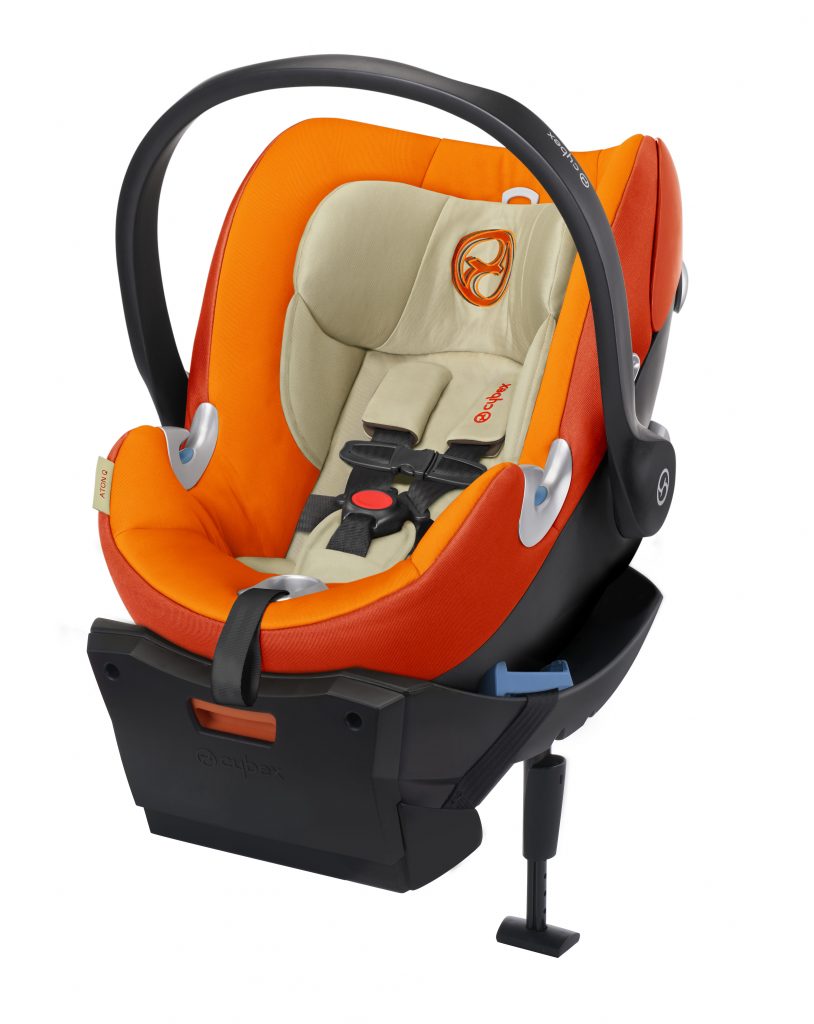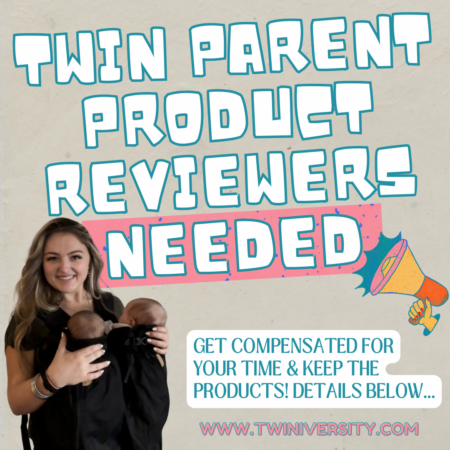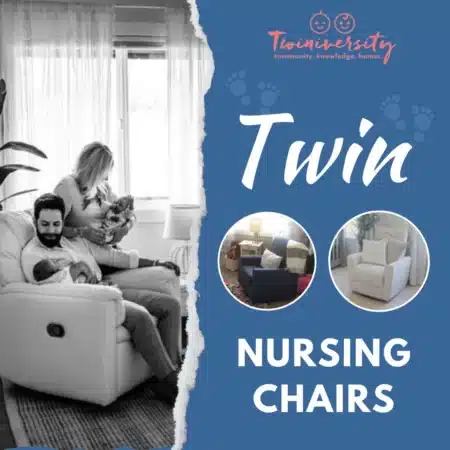Last updated on February 3rd, 2024 at 08:54 am
The American Academy of Pediatrics (AAP) released an updated version of car seat safety guidelines. These guidelines cover everything from the type of car seat each level of infant and child should be using, how to safely install both rear- and front-facing car seats in your vehicle, and helpful tips on booster seats for older children. You can find the entire article at www.healthychildren.org.
You should always read the car seat instruction manual from beginning to end, as well as your car’s manual regarding car seat usage. If you have any questions about the specific installation of the car seat that you purchased, please refer to a car seat safety technician in your area.
Newborns – 2 Years Old:
The AAP recommends that all infants ride rear facing starting with their first ride home from the hospital. All infants and toddlers should ride in a rear-facing seat until they are at least 2 years of age or, preferably, until they reach the highest weight or height allowed by their car seat manufacturer.
There are three types of rear-facing seats available: rear-facing–only, convertible, and 3-in-1. When children reach the highest weight or length allowed by the manufacturer of their rear-facing–only seat, they should continue to ride rear-facing in a convertible or 3-in-1 seat.
Rear-facing Only Seats
- Are used for infants up to 22 to 40 pounds, depending on the model.
- Are small and have carrying handles.
- Usually come with a base that can be left in the car. The seat clicks into and out of the base so you don’t have to install it each time you use it. Parents can buy more bases for additional vehicles.
- They should be used only for travel (not sleeping, feeding, or any other use outside the vehicle).
- Can be used with travel stroller systems.
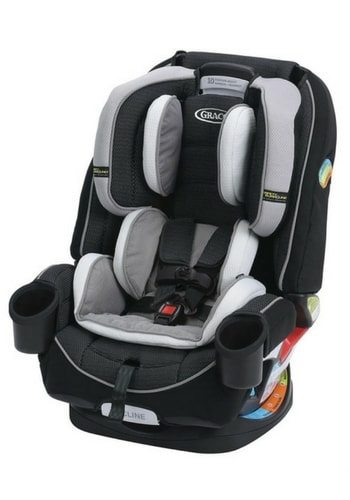
Convertible Seats (Rear-Facing)
Convertible seats can be used rear facing and, later, converted to forward-facing for older children when they outgrow the weight limit, the length limit, or both for rear facing. This means the seat can be used longer. They are bulkier than infant seats and do not come with carrying handles or separate bases are designed to stay in the car. They also cannot be transferred to strollers, making it harder to travel with infant twins.
- Many have higher limits in rear-facing weight (up to 40–50 pounds) and height than rear-facing–only seats, which make them ideal for bigger babies and toddlers.
- Have a 5-point harness that attaches at the shoulders, at the hips, and between the legs.
- Should be used only for travel (not sleeping, feeding, or any other use outside the vehicle).
3-In-1 Seats (Rear-Facing)
- Can be used rear facing, forward facing, or as a belt-positioning booster. This means the seat may be used longer by your child as your child grows.
- Are often bigger in size, so it is important to check that they fit in the vehicle while rear facing.
- Do not have the convenience of a carrying handle or separate base. You cannot use them as part of a stroller system. They may have higher limits in rear-facing weight (up to 40–50 pounds) and height than rear-facing–only seats, which make them ideal for bigger babies and toddlers.
Preschoolers:
Any child who has outgrown the rear-facing weight or height limit for his convertible seat should use a forward-facing seat with a harness for as long as possible, up to the highest weight or height allowed by his car seat manufacturer. It is best for children to ride in a seat with a harness as long as possible, at least to 4 years of age. If your child outgrows a seat before reaching 4 years of age, consider using a seat with a harness approved for higher weights and heights.
There Are 5 Types of Forward-Facing Safety Restraints:
- Convertible seats: Seats can convert from rear-facing to forward-facing. These include 3-in-1 seats.
- Forward-facing–only seats: Seats can be used forward facing with a harness for children who weigh up to 40 to 80 pounds (depending on the model). Although manufacturers are not currently making any forward-facing–only seats, many remain in use from previous years.
- Combination seats with harness: Seats can be used forward facing with a harness for children who weigh up to 40 to 90 pounds (depending on the model) or without the harness as a booster (up to 80–120 pounds, depending on the model).
- Built-in seats: Some vehicles come with built-in forward-facing seats. Weight and height limits vary. However, do not use built-in seats until your child is at least 2 years of age. Read your vehicle owner’s manual for details about how to use these seats.
- Travel vests: Vests can be worn by children between 20 and 168 pounds and can be an option to traditional forward-facing seats. They are useful for when a vehicle has lap-only seat belts in the rear, for children with certain special needs, or for children whose weight has exceeded that allowed by car seats. These vests may require use of a top tether.
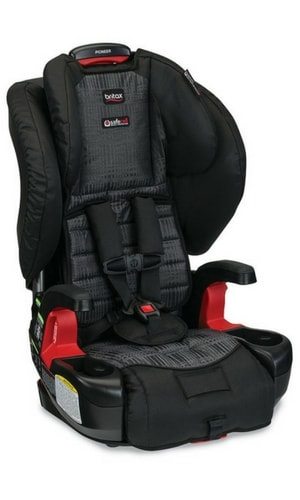
School-Aged Children:
Booster seats are for older children who have outgrown their forward-facing seats. All children whose weight or height exceeds the forward-facing limit for their car seat should use a belt-positioning booster seat until the vehicle seat belt fits properly, typically when they have reached 4 feet 9 inches in height and are 8 through 12 years of age. Most children will not fit in most vehicle seatbelts without a booster until 10 to 11 years of age. All children younger than 13 should ride in the back seat.
There Are Two Types of Booster Seats:
- High-back and backless. They do not come with harness straps but are used with lap and shoulder seat belts in your vehicle. They are designed to raise a child up so that lap and shoulder seat belts fit properly over the strongest parts of the child’s body. Both types of boosters are designed to raise your child so seat belts fit properly, and both will reduce your child’s risk of injury in a crash. High-back boosters should be used in vehicles without headrests or with low seat backs. Many seats that look like high-back boosters are actually combination seats. They come with harnesses that can be used for smaller children and, later, removed for older children. Backless boosters are usually less expensive and are easier to move from one vehicle to another. Backless boosters can be used safely in vehicles with head rests and high seat backs.
Most booster seats are not secured to the vehicle seat with the seat belt or lower anchor and tether but simply rest on the vehicle seat and are held in place once the seat belt is fastened over a child. However, some models of booster seats can be secured to the vehicle seat and kept in place using the lower anchors or top tether. (Currently, only a few vehicle manufacturers offer built-in booster seats.)
Booster seats must be used with a lap and shoulder belt. When using a booster seat, make sure:
- The lap belt lies low and snug across your child’s upper thighs.
- The shoulder belt crosses the middle of your child’s chest and shoulder and is off the neck.
- Make sure your child does not tuck the shoulder belt under her arm or behind her back. This leaves the upper body unprotected and adds extra slack to the seat belt system, putting your child at risk of severe injury in a crash or with sudden braking.
- Never allow anyone to share seat belts. All passengers must have their own car seats or seat belts.
If you have questions or need help installing your car seat, find a certified child passenger safety technician (CPST). Lists of certified CPSTs and child seat–fitting stations are available on the following Web sites:
- NHTSA Parents Central
- National Child Passenger Safety Certified Technicians (Click on “Find a Tech” or call 877/366-8154.) – Includes a list of CPSTs fluent in Spanish and other languages or with extra training in transportation of children with special needs.
Related Articles
- When Should I Pack My Hospital Bag and Install Car Seats?
- How To Choose Car Seats For Twins
- 11 Must Have Supplies For A Road Trip With Twins

